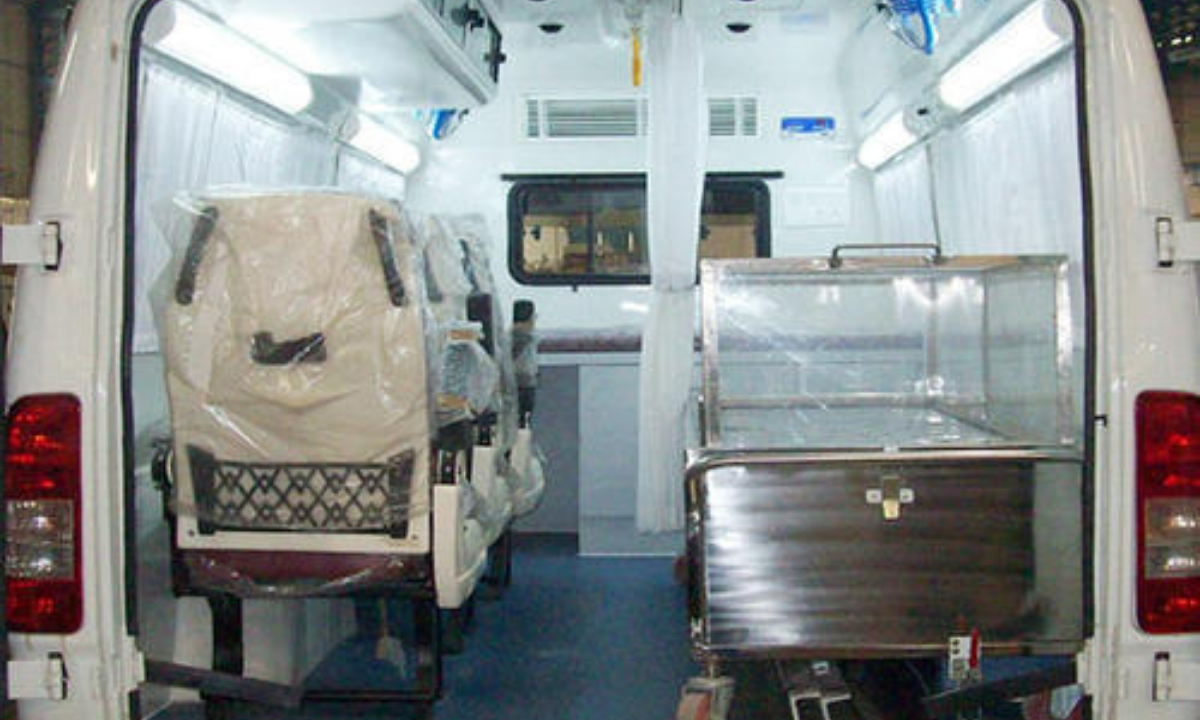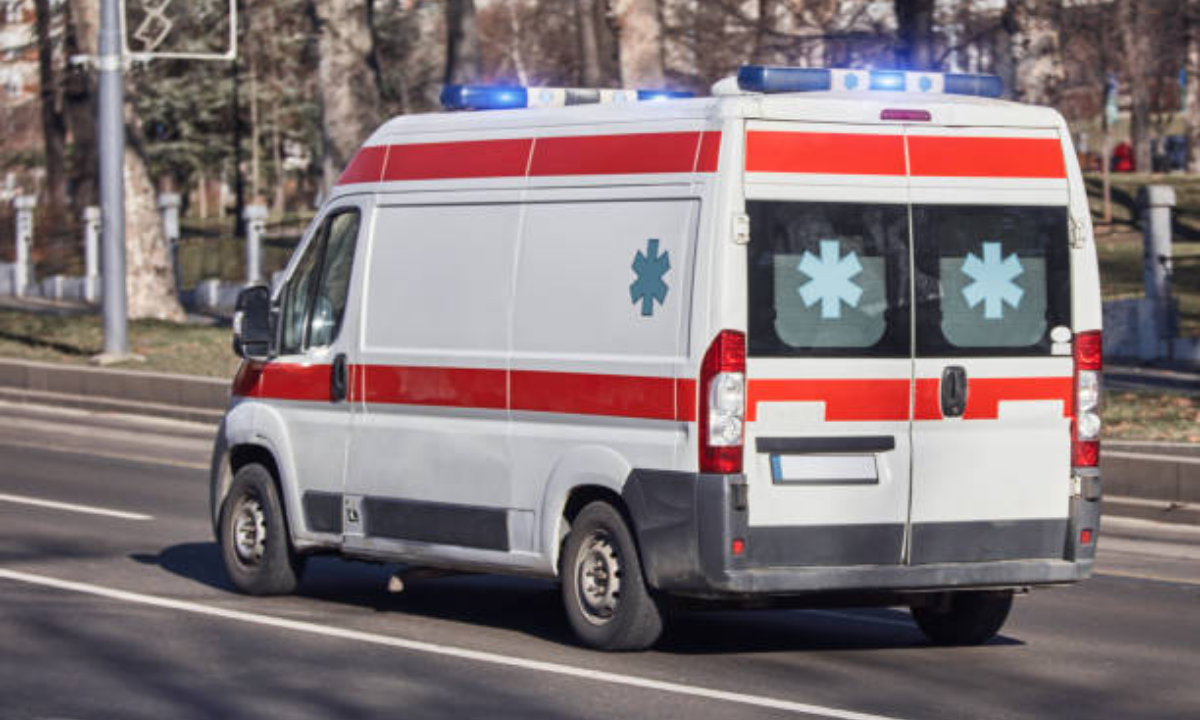Dead body ambulance services are one of the most important and sensitive facilities needed when a loved one passes away. In such moments, the grieving family needs a reliable and respectful way to move the deceased from one place to another, whether it is from a hospital to home, home to the cremation ground, or even across cities.
In this guide, we will explain what happens during dead body transport, the types of dead body transport services available, how to prepare for the process, and what to expect at every step. We will also share insights into the different vehicles for carrying a dead body, including hearse van services, and how dead body transportation in India works for both short and long distances.
Understanding Dead Body Ambulance Services

A dead body ambulance is specifically designed for transporting deceased individuals in a safe, hygienic, and respectful manner. Unlike a regular ambulance, which is equipped for medical emergencies, a dead body ambulance focuses on preservation, careful handling, and comfort for accompanying family members.
These vehicles often have freezer boxes to prevent decomposition during long journeys, secure interiors to keep the body stable, and sometimes even arrangements for basic last rites enroute. The goal is to ensure that the transfer is smooth, dignified, and free from delays.
When Are Dead Body Transport Services Needed?
Families may require dead body transport services in various situations. Common examples include:
- Bringing the deceased from a hospital to their home for the final viewing.
- Transporting the body to a crematorium, burial ground, or shamshan ghat.
- Moving the deceased from one city or state to another for the final rites.
- Arranging repatriation in cases where death occurred abroad.
In each scenario, the process needs to be handled carefully, following legal requirements, documentation protocols, and religious customs.
Types of Vehicles for Carrying Dead Bodies

The vehicle for carrying a dead body depends on distance, preservation needs, and family preference. The main options include:
| Vehicle Type | Best For | Key Features |
| Basic Hearse Van | Short distances within the city | Open or closed design, simple interiors |
| Dead Body Ambulance with Freezer Box | Medium- to long-distance | Temperature control to preserve the body |
| AC Hearse Van | Warm climates or longer journeys | Air conditioning and comfortable seating for the family |
| Mortuary Van | Very long-distance travel, interstate transport | High-capacity freezer, storage space, secure fittings |
Choosing the right vehicle ensures that the deceased is transported with proper preservation and respect while also considering the comfort of accompanying relatives.
Preparing for Dead Body Transportation in India
Before starting dead body transportation in India, certain steps must be taken to ensure the process is legal, smooth, and respectful. This includes:
- Gathering essential documents – A death certificate from a hospital or municipal authority and a police NOC if required (especially in cases of accidental or unnatural deaths).
- Choosing the right service provider – A professional provider like Kaashimukthi ensures proper handling, trained staff, and vehicles equipped for the journey.
- Preservation measures – Using freezer boxes or embalming for long-distance or cross-border transport.
- Coordinating with destination authorities – Informing the crematorium, burial ground, or shamshan ghat in advance to avoid last-minute issues.
The Process of Dead Body Transport by Ambulance
When you book a dead body ambulance, here’s what usually happens:
The team arrives at the designated pickup location, whether it is a hospital, mortuary, or a person’s home. They will handle the body with the utmost care, ensuring proper covering and preservation. For long-distance travel, the body is placed in a freezer box or an embalmed state to slow down decomposition.
Family members can accompany the ambulance if there is space available, and in some cases, the service provider can help with basic rituals and can arrange flowers and garlands. The route is planned to avoid delays, and the team stays in communication with the family throughout the journey.
Role of Hearse Van Services
Hearse van services are essential for short-distance transfers, such as from home to the cremation ground. They are often simpler than full-dead-body ambulances but still offer privacy and dignity. Some hearse vans are open-air, which is preferred in certain traditions, while others are fully covered to protect against weather conditions.
These vehicles are often chosen when the distance is short, the family wants to keep costs moderate, and no advanced preservation is required. However, for longer travel or in hot climates, an air-conditioned or freezer-equipped ambulance is recommended.
Tips for a Smooth Dead Body Transport Experience
While the service provider will handle most of the process, there are a few things families can do to ensure everything goes smoothly:
- Keep all necessary documents ready before the vehicle arrives.
- Inform the destination in advance to prepare for arrival.
- Decide in advance whether family members will travel in the ambulance.
- Ask the service provider about preservation methods if travelling long distances.
- Pack water, snacks, and essentials for accompanying members, especially on interstate journeys.
Challenges in Dead Body Transportation in India
While dead body transportation in India is a well-established process, families sometimes face challenges such as delays in documentation, high traffic during city travel, or a lack of available freezer-equipped vehicles in smaller towns.
Professional services like Kaashimukthi are experienced in overcoming these issues by having a network of vehicles, trained staff, and coordination with local authorities. This reduces stress for the family and ensures that the process is carried out with minimal complications.
Frequently Asked Questions (FAQ)
Q: How is a dead body preserved during long-distance travel?
A: For long journeys, the body is typically preserved using freezer boxes that maintain a low temperature to slow down decomposition. In some cases, embalming is performed, which involves treating the body with chemicals to preserve it for a longer duration. The choice between these methods depends on travel time, distance, and environmental conditions.
Q: Can family members travel along in the dead body ambulance?
A: Yes, in most cases, one or two close family members can travel in the dead body ambulance, provided there is enough seating space. This allows loved ones to remain close during the final journey, but it’s important to confirm this with the service provider in advance for comfort and safety reasons.
Q: What documents are required for dead body transport services?
A: The most essential document is a valid death certificate issued by the hospital or municipal authority. Additionally, an identity proof of the deceased is required. In cases of accidental or unnatural death, a police No Objection Certificate (NOC) is also mandatory before transportation can begin.
Q: Are hearse van services available in rural areas?
A: While availability may vary by region, many service providers and local authorities can arrange hearse vans for rural areas when informed in advance. In smaller towns and villages, municipal bodies or partner agencies often coordinate with urban service providers to ensure timely transport.
Q: Is embalming always necessary?
A: Embalming is not required for short-distance or within-city transportation. However, it becomes necessary for long-distance travel, interstate movement, or when the body needs to be flown by air, as it helps preserve the body for an extended period and meets regulatory requirements
In Closing
At Kaashimukthi, we believe that every final journey should be carried out with compassion, dignity, and professionalism. Whether you require a dead body ambulance for a short city transfer or long-distance transport services, our focus remains on respecting the departed, comforting the grieving family, and handling the necessary documentation to ensure a smooth and dignified transfer.
In the vast and diverse context of dead body transportation in India, knowing what to expect can make this emotional journey more manageable, allowing families to focus on paying tribute to the life and memories of the departed.

Madhu is an Entrepreneur, a Mentor, a Writer and an Aspiring Car Race Driver. He is Deeply passionate about leveraging Technology and Human Centred Design to make complex care and End of Life Planning easier. With the ultimate aim of Improving the quality of Life in the Twilight years. Madhu is highly educated and Alumni of IIM-Bangalore, Sikkim Manipal University and Bangalore University besides a Rich Industry Experience in the field of Product Management, Design, Supply chain, Finance, Commercial Management and Funeral Services.

